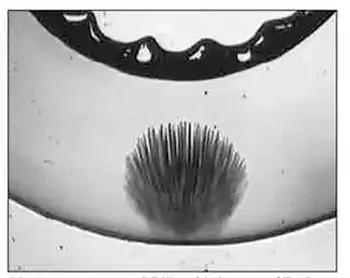General Condition Assessment of XLPE and PILC Cables
By Roberts Neimanis and Sarah Acker, GE Energy

Download Our OSHA FS3529 Fact Sheet – Lockout/Tagout Safety Procedures

- Learn how to disable machines and isolate energy sources safely
- Follow OSHA guidelines for developing energy control programs
- Protect workers with proper lockout devices and annual inspections
Assessment of XLPE and PILC Cables covers diagnostics, condition monitoring, insulation testing, partial discharge analysis, tan delta, VLF, sheath integrity checks, and lifecycle asset management to enhance reliability, safety, and fault prevention.
What Is the Assessment of XLPE and PILC Cables?
A systematic evaluation using diagnostics to determine cable condition, risks, and maintenance needs.
✅ Conduct PD, VLF, and tan delta tests to gauge insulation health.
✅ Analyze sheath integrity, TDR traces, and thermography for defects.
✅ Score asset condition to plan maintenance, refurbishment, or replacement.
GE Energy uses non-destructive diagnostic technology to measure the overall health of a power cable, to reveal existing cable defects through partial discharge testing, and to predict the future life expectancy of the cable. Cable testing helps our customers to be proactive in preventing costly forced service outages while optimizing their capital budgeting for replacement programs. This offering applies to medium- and high-voltage shielded power cable (5-25 kV XLPE cables and 5-500 kV PILC cables) with a maximum length of 1.5 to two miles. The cables to be tested can be overhead, in cable trays, in duct bank, or buried. The GE Energy solution includes both general condition assessment and partial-discharge technologies. This paper will address only the general condition assessment technology. For a broader overview of techniques for asset condition assessment, see the Electricity Forum's power cable diagnostics guide for context on PD detection and lifecycle modeling.
DIAGNOSTICS OF XLPE (CROSS-LINKED POLYETHYLENE) CABLES
One of the major causes of failures in XLPE insulated cables is water-treeing. Water-tree deterioration process is very slow (5-50 years) and can vary from cable to cable, among different designs, and also among individual cables of same design. Earlier studies have shown that the dielectric response, obtained by dielectric spectroscopy measurements performed at high voltage levels, is correlated to water-tree content and breakdown voltage. Higher losses and increasing non-linearity of frequency response are associated with lower breakdown voltage. Understanding the relationship between dielectric losses and the principles in insulation resistance explained can help interpret slope changes and voltage dependence more confidently.
Test Your Knowledge About Wiring Devices!
Think you know Wiring Devices? Take our quick, interactive quiz and test your knowledge in minutes.
- Instantly see your results and score
- Identify strengths and areas for improvement
- Challenge yourself on real-world electrical topics
Water-tree measurement on XLPE cable requires an IDA 200* insulation diagnostics unit with the IDA HVU (High Voltage Unit) option. The diagnostic approach is based on extent of non-linearity of XLPE cable insulation. In performing a general condition assessment on XLPE cable, the dielectric spectroscopy technology shows the severity of water-trees in the insulation. The water-tree aging process is very slow, but it is important to understanding the degree of damage to the insulation. A heavily aged cable can fail catastrophically if the insulation stress is increased quickly (i.e. lightning impulses or faults). The HVU is used with the IDA 200 system to increase the output voltage up to 30 kV (21 kVrms). The main application for this combination is for diagnosis of water-tree deteriorated extruded power cables. The system works equally well when other types of non-linear materials are to be characterized. Field crews should follow established cable handling and testing procedures to ensure safe setup of the IDA 200 and HVU in energized environments.
DIAGNOSTICS OF PAPER INSULATED (PILC) CABLES
The three most commonly seen problems in PILC cables are partial discharge (cable itself and joints), moisture ingress, and thermal aging and resulting increase of moisture content (not dangerous by itself). In performing a general condition assessment on paper-insulated cable, the dielectric spectroscopy technology allows for estimation of average moistening of the insulation. Moreover, the presence of other defects, such as developing short-circuit due to carbonizing of paper, may be identified. Measurements on PILC cables are normally performed with the IDA 200 system only. Test voltage is by default 140 Vrms and frequency range 0.01-1000 Hz. Frequency response of a paper insulated cable can reveal worsening of insulation condition which is caused, for example, by an increase of moisture content. For locating and characterizing PD sources in substations and vaults, modern FLIR PD acoustic imaging can provide rapid screening before detailed dielectric assessment.
TECHNICAL DESCRIPTION OF IDA 200
The system (IDA 200) measures the impedance of a specimen at a variable voltage and frequency. A Digital Signal Processing (DSP) unit generates a test signal with the desired frequency. This signal is amplified with an internal amplifier and then applied to the specimen. The voltage over and the current through the specimen are measured with high accuracy using a voltage divider and an electrometer (ampere meter). The diagnostic measurement is performed by applying a relatively low voltage (up to 140 Vrms). The IDA 200 system measures the capacitance and dielectric losses at discrete frequencies both above and below the main frequency (output signals with frequencies from 0.1 mHz to 1 kHz are available). By avoiding the main frequency and its harmonics, an efficient filtering of their corruptive effects is enabled. These measurement strategies align with best-practice power cable test methods used across utilities for benchmarking insulation performance.
The diagnostic measurement is performed by applying a relatively low voltage (up to 140 Vrms). The IDA 200 system measures the capacitance and dielectric losses at discrete frequencies both above and below the main frequency (output signals with frequencies from 0.1 mHz to 1 kHz are available). By avoiding the main frequency and its harmonics, an efficient filtering of their corruptive effects is enabled.
DATA INTERPRETATION XLPE CABLES
The IDA 200 system helps to identify water-treeing in an extruded power cable. There are four different responses that will help to determine the health of the cable: low losses and no voltage dependence, VDP response, TLC response and LC response. LOW LOSSES AND NO VOLTAGE DEPENDENCE Graph 1 is an example showing capacitance changes in a cable having good overall health (dry cable). The cable was frequency swept from 0.1 Hz to 1 Hz at 3kV and 6kV. When the voltage is varied from 3kV to 6kV, the capacitance remains relatively the same, thus indicating a good condition of the cable. Moreover, when the 3kV and 6kV tests were performed, the frequency response was repeatable showing that the cable behaves consistently when voltage is varied. Similar condition-monitoring principles are applied in transformer oil testing to trend dielectric strength and contaminants across a fleet.
FREE EF Electrical Training Catalog
Download our FREE Electrical Training Catalog and explore a full range of expert-led electrical training courses.

- Live online and in-person courses available
- Real-time instruction with Q&A from industry experts
- Flexible scheduling for your convenience
VDP RESPONSE
A voltage dependent increase of capacitance and loss. Graph 2 displays the capacitance changes that show a dry cable vs. a moist cable. Both cables were frequency swept from 0.1 Hz to 1 Hz at 3kV and 6kV. When looking at the dry cable, the voltage is varied from 3kV to 6kV and the capacitance stays relatively the same, thus indicating a good condition of the cable. If we look at the moist cable, when the voltage is varied from 3kV to 6kV, the capacitance increases with voltage. Looking at the moist cable, when the 3kV, 4.5kV and 6kV tests were performed, the frequency response is also not repeatable indicating water-treeing is present in this cable.
CONCLUSION
The IDA 200 test set can be used to help identify watertreeing in XLPE as well as moistening of the PILC cables. By identifying water-treeing in XLPE cables, increased moisture content in PILC cables and other defects in both types of cables, customers will have the ability to create a cost effective maintenance program for their cables and thus increase the reliability of their network. Informed by these diagnostics, utilities can integrate power transformer health checks into broader maintenance strategies for substations and feeders.
From: Wire and Cable and Wiring Methods Handbook, Vol 3, The Electricity Forum







